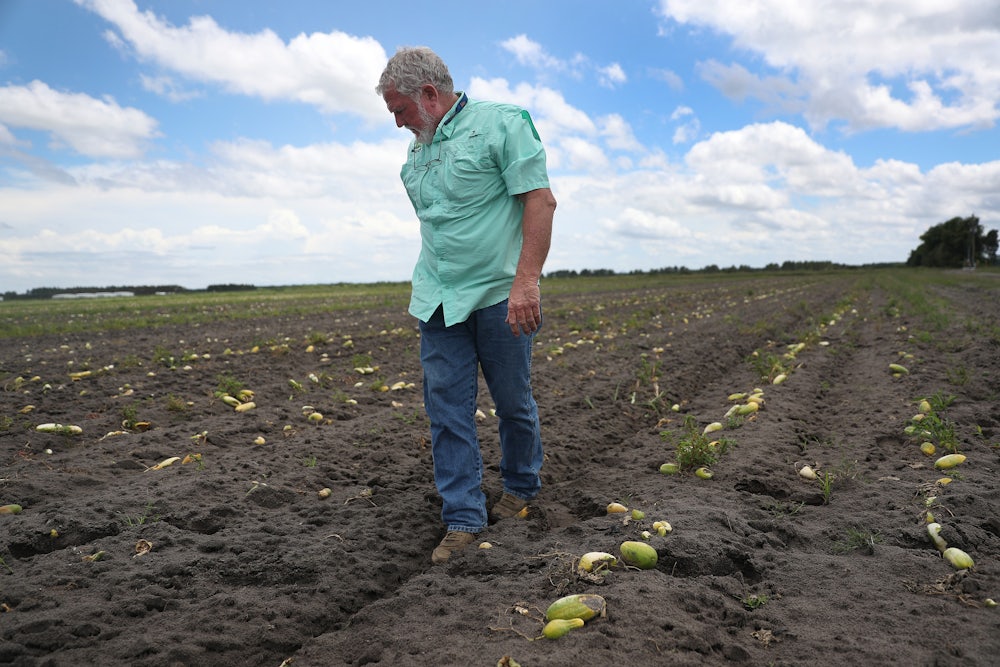The other day my landlord mentioned that he was having trouble filling several open apartments in the building. “It’s the first time the units have been vacant in 20 years,” he said glumly. Though the building happens to be attractively located near a park, several train lines, and a cluster of restaurants and bars, the lack of prospective renters wasn’t much of a shock. According to Curbed, the supply of available apartments in Brooklyn now outpaces the demand for them. As the pandemic drags on, the relative few who want and can afford to leave the city for less cramped quarters have already fled; at the other end of the economic spectrum, those who have been laid off struggle to afford rent at all. The glut of vacant apartments, then, comes just as New York slides closer and closer to the eviction crisis that’s already started to overtake other parts of the country.
That unsettling coexistence of scarcity and overabundance has also sharpened around other basic necessities during the ongoing recession. On Monday, Bloomberg released a harrowing report on the surge in food insecurity around the globe. An additional 132 million people worldwide are expected to go hungry this year, and that widespread starvation, perversely enough, won’t be the result of a crop shortage or natural disaster. “The massive spike is happening at a time of enormous global food surpluses,” the Bloomberg authors wrote. “And it’s happening in every part of the world, with new levels of food insecurity forecast for countries that used to have relative stability.” With the restaurant industry in the United States on indefinite hold, farms that once supplied restaurants with produce are now so overwhelmed with unsold crops that they’re forced to destroy them or let them spoil. Meanwhile, in Queens last week, the wait at a food bank was approximately the length of an entire workday. Though there’s too much food, people are going hungry and the price of groceries remains high.
There’s a long-standing myth, beloved by capitalism’s boosters, that an unbridled market generates efficiency. But when farmers and other suppliers are forced to abandon perfectly good fruits, vegetables, eggs, and other foods while millions of people experience hunger, it’s clear that leaving essentials like food and shelter to the whims of the so-called invisible hand produces its own extreme kind of disorganization. The waste is built into the system: As one cabbage farmer struggling to deal with excess crops told Bloomberg, though he wanted to donate his unsold cabbages, the cost of harvesting them without earning any money in return was prohibitive; it was cheaper to just let the crops go bad in the fields. “There are times when there is food available and it’s because of logistics that it doesn’t find a home,” he said. “Logistics,” in this case, arguably includes the profit relationship itself, which means that a farmer can’t afford to give away food for free even when there’s no chance of anyone buying.
The same goes for housing, which constitutes yet another crisis in the making with the unemployment rate still in the double digits and various eviction protections across the country starting to expire. The chance that the market might somehow “correct” or stave off that disaster is about as good as the chance that the market will resolve mounting food insecurity.
Last month, apartment vacancies in Manhattan reached a 14-year high, and as a result, the median rent in the borough dropped all the way down to the bargain price of $3,167—a sum still entirely unaffordable for the vast majority of residents. As New York state Senator Zellnor Myrie told Curbed last week, without serious (and sustained) government intervention like a long-term extension of eviction protections and more financial assistance for both tenants and landlords, the city would be opening the “eviction floodgates” come October, when the state’s eviction moratorium ends. At the same time, economists have predicted that more and more apartments will remain unrented over that same time period. “There’s going to be even higher vacancy rates, and even more supply coming into the market,” StreetEasy’s Nancy Wu told Marketplace. Yet there are rather straightforward resolutions to the seeming paradox of such vacancies coinciding with mass evictions that a few municipalities have put into practice. In July, for instance, Barcelona’s city government simply commandeered unused units and converted them into public housing.
According to Bloomberg, the number of people projected to die from the current senseless mismatch between how much food (or shelter) exists and how many people can afford those things will exceed the number of fatalities directly from Covid-19. Free-market defenders have always evoked the spectacle of the Soviet-era bread lines to illustrate the supposed paucity of a socialist economy, but it’s not clear why the same lines forming while an abundance of bread sits untouched in a privately owned warehouse is any better. While my landlord and others might now be waiting on edge for tenants to fill their vacant apartments, an even greater number of people are trying not to plunge headlong into misery.
